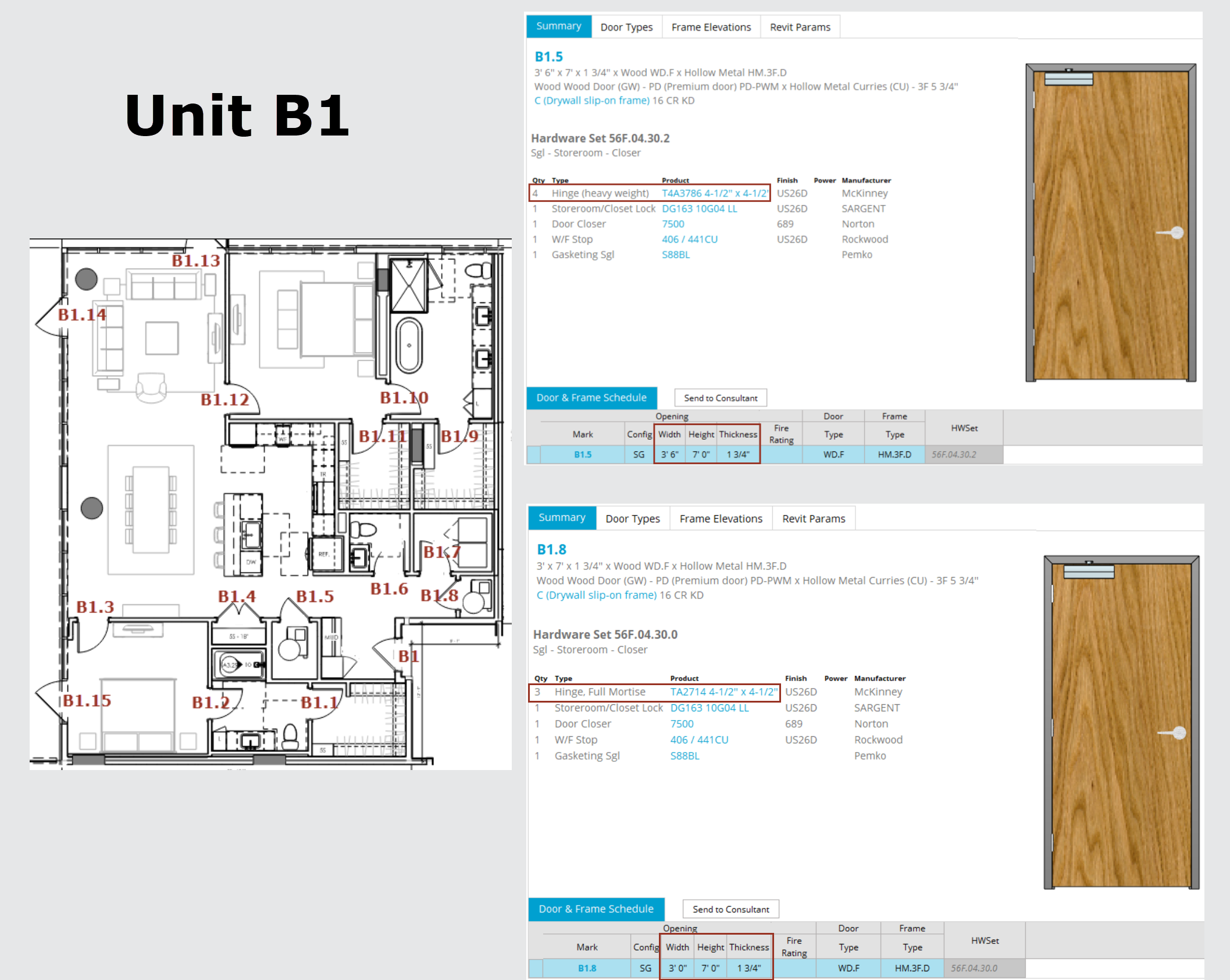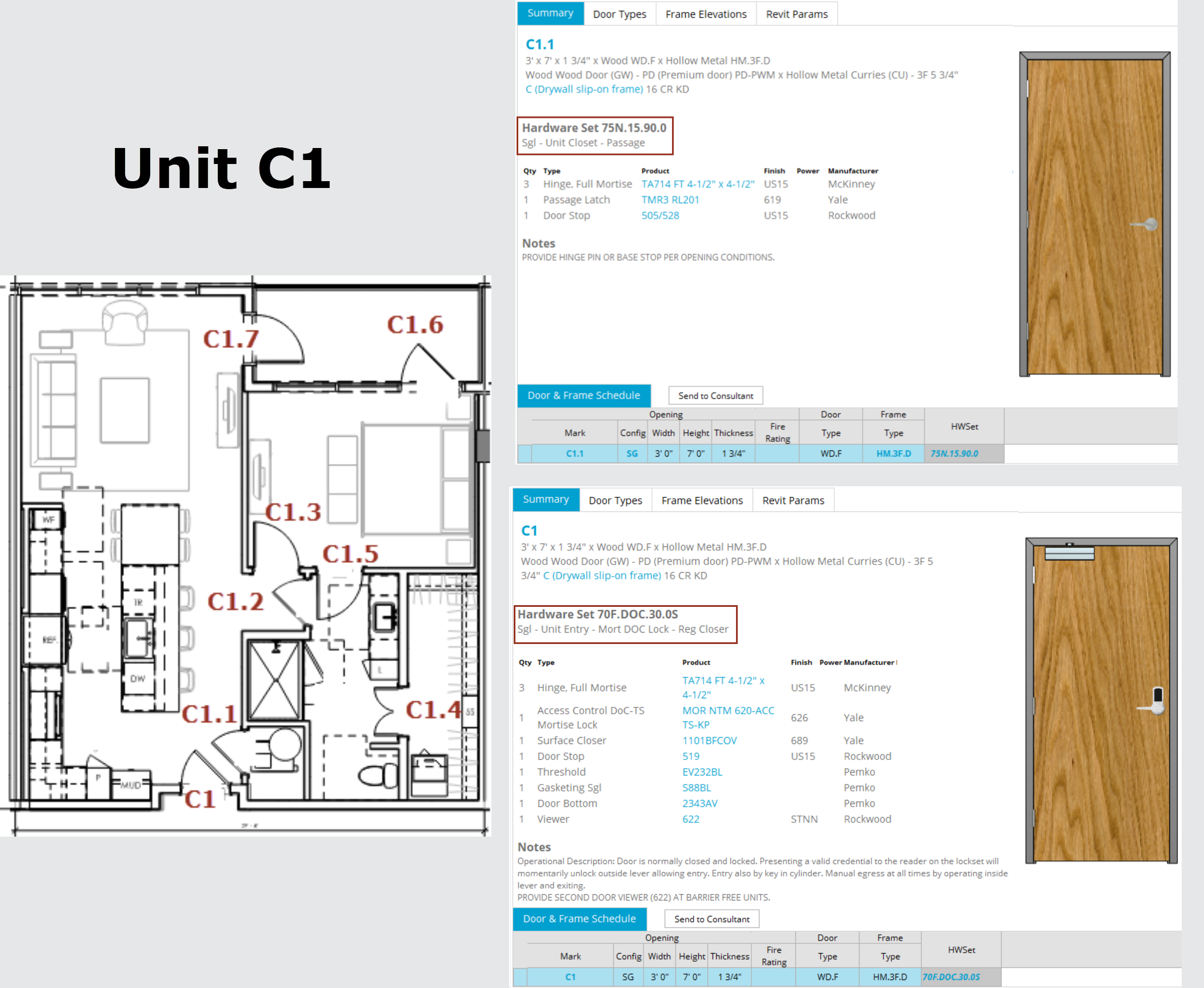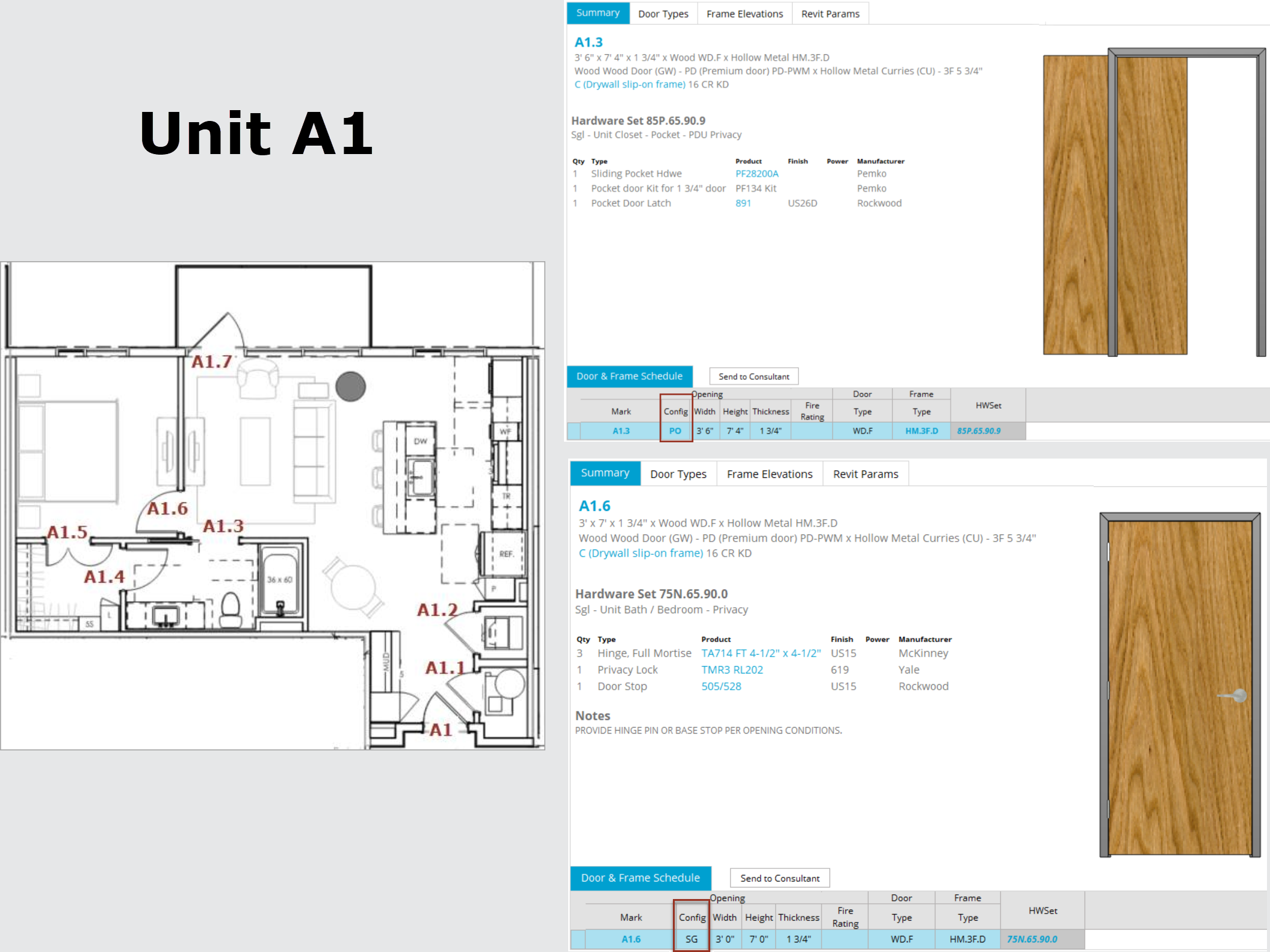Best practices for door numbering when using Type Marks
Using Type Marks is a good way to standardize openings, but when a type mark (or even identical mark numbers) have variations (i.e. size or locking function) they may be need to be specified differently. Here are some Best Practices to consider.
Type Marks
Helpful Hints!
- Don't base these on the type of door panel.
- Consider the function of the opening when numbering.
- Consider the size of the opening, width and height.
- Think about Unit Types as a group of openings
Just as you wouldn't use the same mark number in a building for a stairway and a restroom as an example, you wouldn't want to use the same type mark for a bedroom door and a closet door.
Here's One Example:
With three distinct unit types, considering labeling the units as their own type and each door within the unit to to match:
- Prefix = the Unit: A1, B1 and C1
- Suffix = the door number: A1, A1.1, A1.2...., B1, B1.1, B1.2..., C1, C1.1, C1.2... for each unit
- Either the Mark or Type Mark parameter can be used
- This helps distinguish similar panels types with different operations like swinging or sliding, variations in size and different locking functions.



